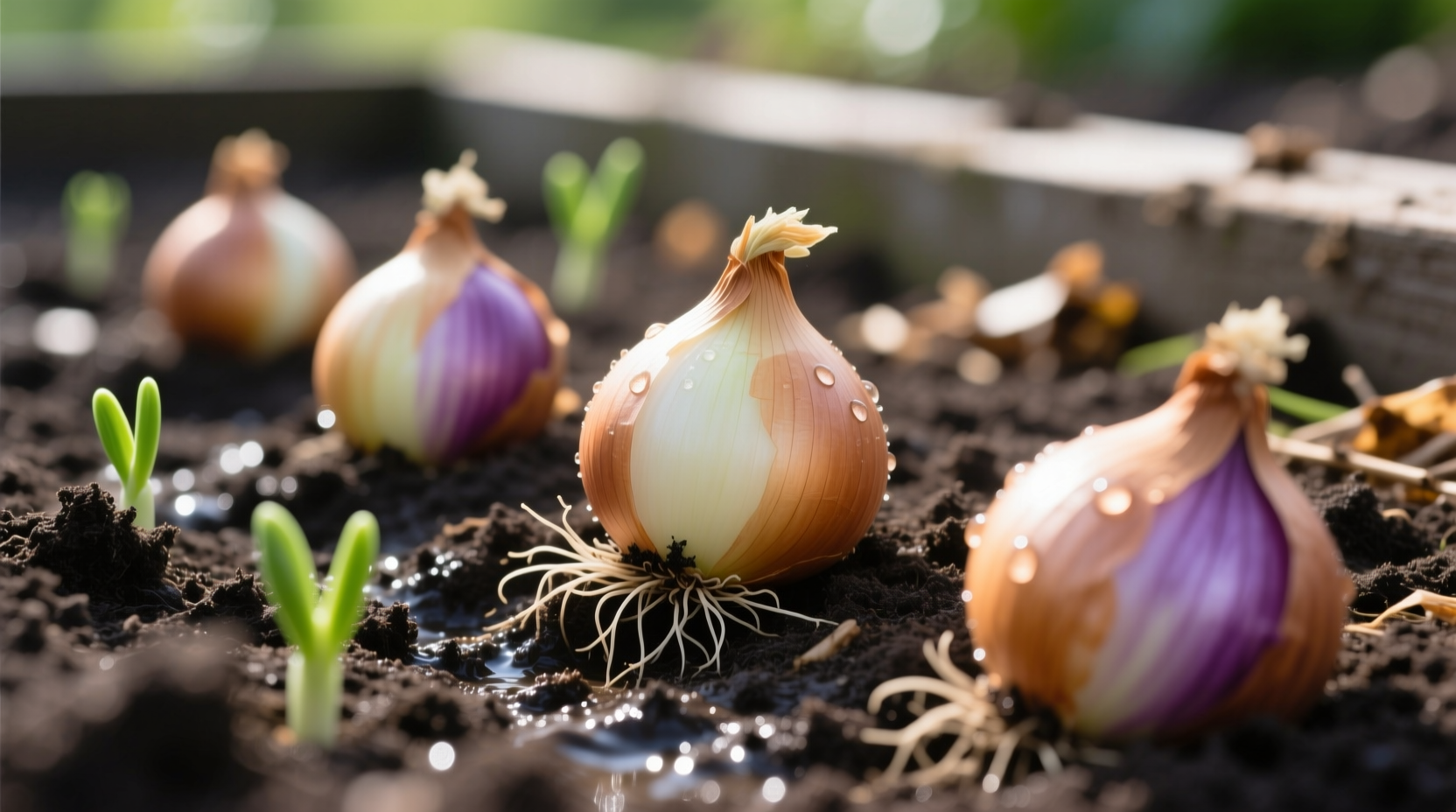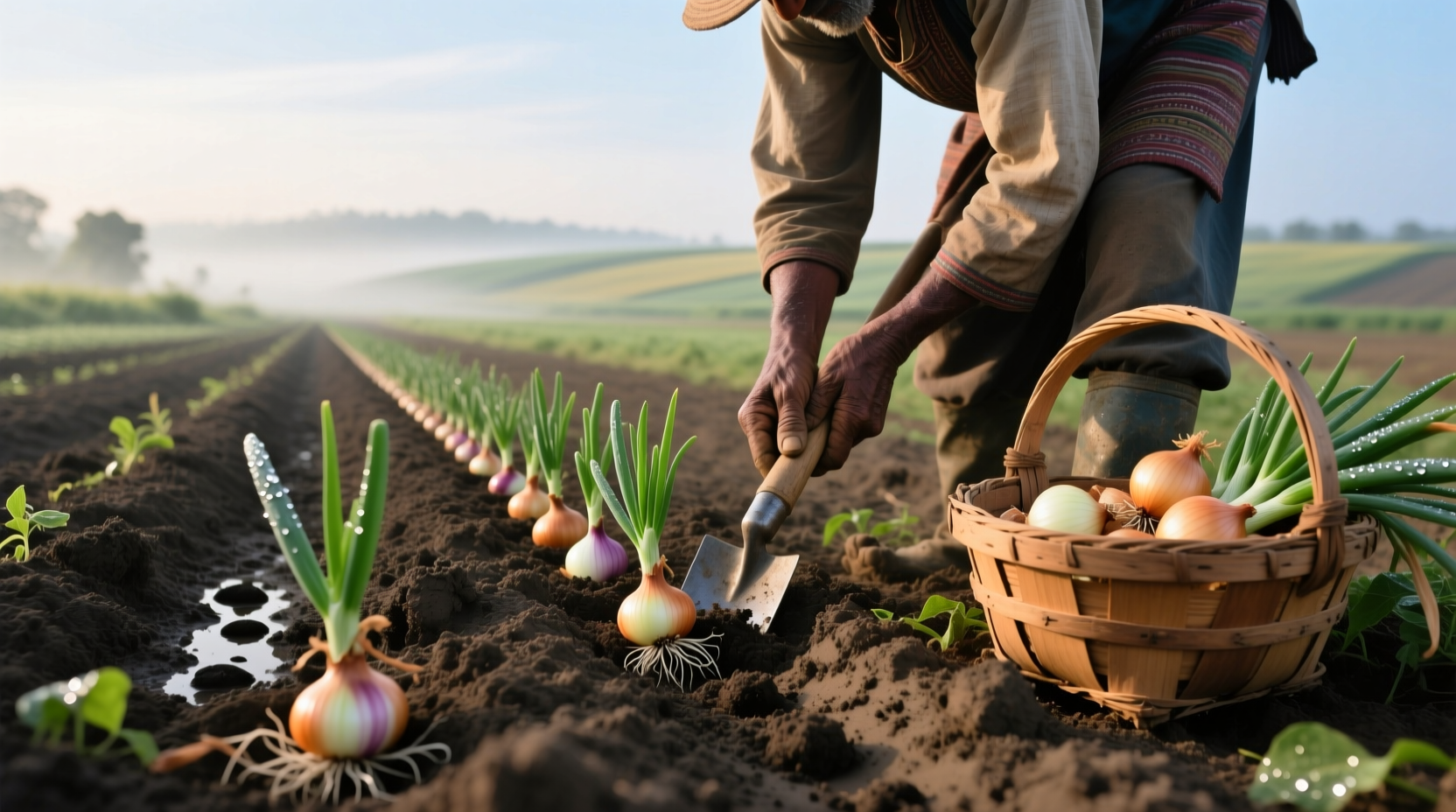Master the Art of Onion Planting for Bountiful Harvests
Whether you're a beginner gardener or expanding your vegetable patch, understanding proper onion planting techniques ensures crisp, flavorful bulbs all season. This comprehensive guide delivers science-backed methods used by agricultural experts to maximize your onion yield while avoiding common mistakes that lead to small bulbs or premature bolting.
Planning Your Onion Planting Strategy
Selecting the right onion variety for your climate zone determines your entire growing success. Onions fall into three photoperiod categories based on daylight requirements:
| Variety Type | Daylight Requirement | Best Regions | Planting Time |
|---|---|---|---|
| Short-Day (10-12 hours) | 10-12 hours of daylight | Zone 7 and south | Oct-Dec for spring harvest |
| Intermediate-Day (12-14 hours) | 12-14 hours of daylight | Zone 5-7 | Feb-Mar for summer harvest |
| Long-Day (14+ hours) | 14+ hours of daylight | Zone 3-5 | Mar-Apr for late summer harvest |
According to the University of Minnesota Extension, planting the wrong variety for your region causes 78% of failed onion crops. Southern gardeners who mistakenly plant long-day varieties often experience premature bolting before bulb formation.
Soil Preparation: The Foundation for Healthy Onions
Onions demand well-draining soil with consistent moisture—soggy conditions cause rot while dry spells create small, pungent bulbs. Follow these soil preparation steps 2-3 weeks before planting:
- Test soil pH using a reliable kit (ideal range: 6.0-6.8)
- Amend heavy clay soils with 3 inches of compost and coarse sand
- Work in 2-3 inches of well-rotted manure for nitrogen needs
- Create raised beds 4-6 inches high in areas with poor drainage
The USDA Natural Resources Conservation Service confirms that proper soil structure increases onion yields by up to 40% compared to unamended garden beds. Avoid fresh manure which can cause excessive top growth at the expense of bulb development.
Planting Techniques for Maximum Bulb Development
Choose between seeds, sets, or transplants based on your growing season length:
Planting Onion Sets (Recommended for Beginners)
- Choose sets larger than a dime for immediate growth (smaller sets often bolt)
- Plant pointy end up, 1-2 inches deep depending on set size
- Space plants 4-6 inches apart in rows 12-18 inches apart
- Water thoroughly after planting but avoid over-saturation
Starting from Seed (For Greater Variety Selection)
Begin seeds indoors 8-10 weeks before last frost. Thin seedlings to 2 inches apart when they reach 4 inches tall. Transplant outdoors when seedlings are pencil-thick, burying only the root ball.

Essential Care Throughout the Growing Season
Onions require consistent care during their 90-120 day growing cycle. Follow this growth timeline for optimal results:
Onion Growth Stage Timeline
- Weeks 1-4: Root establishment - keep soil moist but not wet
- Weeks 5-8: Leaf development - apply balanced fertilizer every 2 weeks
- Weeks 9-12: Bulb initiation - reduce watering slightly
- Weeks 13-16: Bulb enlargement - stop watering when tops begin falling
- Week 17+: Maturation - harvest when 50% of tops have fallen naturally
Monitor for these common issues and their solutions:
- Yellowing leaves: Nitrogen deficiency - apply balanced fertilizer
- Thick necks: Over-fertilization - reduce nitrogen after bulb formation
- Small bulbs: Overcrowding - thin plants to proper spacing
- Premature flowering: Temperature shock - harvest immediately
Harvesting and Curing for Long-Term Storage
Harvest onions when approximately half the tops have fallen naturally. Gently lift bulbs with a garden fork and cure them in a shaded, well-ventilated area for 2-3 weeks. The Oregon State University Extension recommends maintaining 75-80% humidity during curing to prevent spoilage while allowing skins to dry properly.
Store cured onions in mesh bags in a cool (32-40°F), dark location with good air circulation. Properly stored onions maintain quality for 4-6 months. Check monthly for soft spots or sprouting.
Regional Planting Considerations
Successful onion planting varies significantly by climate zone. Gardeners in Zone 3-5 should plant long-day varieties in early spring for late summer harvest. Zone 6-7 gardeners achieve best results with intermediate-day varieties planted in late winter. Southern gardeners (Zone 8+) must plant short-day varieties in fall for spring harvest to avoid bolting from summer heat.
The USDA Plant Hardiness Zone Map provides precise regional guidance based on your specific location. Coastal gardeners should adjust planting dates based on microclimates, as ocean proximity can delay spring warming by 2-3 weeks.
Troubleshooting Common Onion Planting Problems
Address these frequent issues with proven solutions:
- Bolting (premature flowering): Caused by temperature fluctuations or planting wrong variety. Harvest immediately as bulb development stops.
- Small bulbs: Usually from overcrowding or poor soil nutrition. Thin plants to 4-6 inch spacing and apply balanced fertilizer.
- Rotting at base: Indicates overwatering or poor drainage. Improve soil structure with compost and reduce watering frequency.
- Pale, weak growth: Sign of nitrogen deficiency. Apply balanced fertilizer every 2-3 weeks during leaf development phase.
Advanced Techniques for Larger, Sweeter Onions
Professional growers use these methods to enhance onion quality:
- Apply potassium-rich fertilizer during bulb formation for sweeter flavor
- Use drip irrigation to maintain consistent soil moisture without wetting foliage
- Plant onions in raised beds for improved drainage and earlier spring planting
- Interplant with carrots to maximize garden space and deter pests naturally











 浙公网安备
33010002000092号
浙公网安备
33010002000092号 浙B2-20120091-4
浙B2-20120091-4